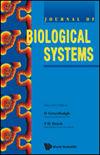具有HOLLINGⅢ型功能反应的捕食模型在收获条件下的全局动力学
IF 1.5
4区 数学
Q3 BIOLOGY
引用次数: 6
摘要
在本文中,我们研究了具有Holling III型功能响应的两种群食物链模型的全局动力学,该模型包括猎物的线性收获和捕食者的非线性收获。利用一致持久性理论讨论了这两个物种的长期持续存在。各种平衡点的稳定性用模型参数来描述。利用中心流形定理确定了非双曲平衡点的局部渐近稳定性。当两个物种都存在时,模型系统解的全局行为是通过考虑共存平衡的全局性质来确定的。在这里,我们综合考虑了同维一和同维二的不同分叉,并讨论了各种模型参数对系统动力学的重要性。与没有任何收获的模型系统相比,该模型系统显示出更复杂和更现实的行为,其中一个或两个物种具有恒定收获或线性产量收获。已经进行了数值模拟来说明理论发现。本文章由计算机程序翻译,如有差异,请以英文原文为准。
GLOBAL DYNAMICS OF A PREY–PREDATOR MODEL WITH HOLLING TYPE III FUNCTIONAL RESPONSE IN THE PRESENCE OF HARVESTING
In this paper, we have investigated global dynamics of a two-species food chain model with the Holling type III functional response that includes linear harvesting for the prey and nonlinear harvesting for the predator. The long-time continued existence of both species is discussed using uniform persistence theory. Stability of various equilibrium points is described in terms of model parameters. The local asymptotic stability of non-hyperbolic equilibrium points is determined with the help of center manifold theorem. Global behavior of solutions of the model system when both species are present is determined by considering the global properties of the coexistence equilibrium. Here, we have taken a comprehensive view by considering different bifurcations of co-dimension one and two and have discussed the importance of various model parameters on the system dynamics. The model system shows much more complex and realistic behavior compared to a model system without any harvesting, with constant harvesting or linear-yield harvesting of either or both of the species. Numerical simulations have been conducted to illustrate the theoretical findings.
求助全文
通过发布文献求助,成功后即可免费获取论文全文。
去求助
来源期刊
CiteScore
2.80
自引率
12.50%
发文量
31
审稿时长
1 months
期刊介绍:
The Journal of Biological Systems is published quarterly. The goal of the Journal is to promote interdisciplinary approaches in Biology and in Medicine, and the study of biological situations with a variety of tools, including mathematical and general systems methods. The Journal solicits original research papers and survey articles in areas that include (but are not limited to):
Complex systems studies; isomorphies; nonlinear dynamics; entropy; mathematical tools and systems theories with applications in Biology and Medicine.
Interdisciplinary approaches in Biology and Medicine; transfer of methods from one discipline to another; integration of biological levels, from atomic to molecular, macromolecular, cellular, and organic levels; animal biology; plant biology.
Environmental studies; relationships between individuals, populations, communities and ecosystems; bioeconomics, management of renewable resources; hierarchy theory; integration of spatial and time scales.
Evolutionary biology; co-evolutions; genetics and evolution; branching processes and phyllotaxis.
Medical systems; physiology; cardiac modeling; computer models in Medicine; cancer research; epidemiology.
Numerical simulations and computations; numerical study and analysis of biological data.
Epistemology; history of science.
The journal will also publish book reviews.

 求助内容:
求助内容: 应助结果提醒方式:
应助结果提醒方式:


